Check out Fieldpiece’s Heating Season portfolio and make sure you have what you need for these cold Winter months!
Fieldpiece Tools for HEATING SEASON
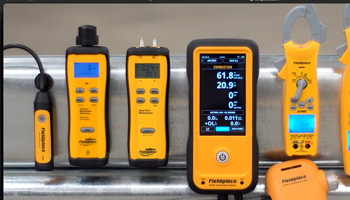

Check out Fieldpiece’s Heating Season portfolio and make sure you have what you need for these cold Winter months!
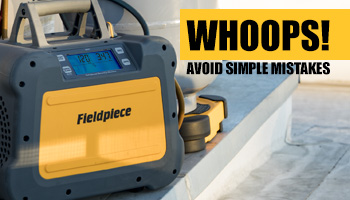
Most techs in the field want to be better, faster and more efficient at their jobs. Here are three things to focus on to help improve skills, satisfy customers and finish jobs more quickly and thoroughly.
First, focus on airflow.
HVACR is all about moving air around. No matter how efficiently a system runs, or how expertly it’s fine-tuned, if the ductwork is too small, makes too many bends, has blockages or large gaps or leaks—the space is not going to be properly cooled or heated. Techs can frequently focus on “the box” because that’s where the technology is, and they ignore the rest of the system. Seasoned technicians understand the importance of airflow when installing a system, making sure duct systems are correctly sized, contain fewer bends, and allow for free flow of air throughout the entire home.
If you’re changing out a system, consider repairing or replacing necessary ductwork as well. Remember, older systems may contain asbestos, requiring certified professionals to aid in removal. Even in newer systems, it remains important to test for leaks and efficiency, so always be prepared to make revisions that improve overall performance in the long run.
Second, look for obvious problems.
When assessing a system, start with the easy stuff. Be alert and look for things that are out of the ordinary and may be symptoms of bigger problems. For instance, refrigerant oil stains on the floor could mean a refrigerant leak in the system. Use a flashlight to visually inspect the evaporator coils and blower wheels. By examining them for dirt or corrosion, you could uncover what’s causing the issues. Another quick, easy fix is the air filter. Swapping it out with a clean one immediately improves airflow and circulation.
Also, look for UV damage on control wiring. Sunlight tends to cause wiring to degrade prematurely, and this may adversely impact a system. By checking the entire system, it’s easy to judge the quality of workmanship and know how carefully to inspect other areas of the system.
Lastly, doublecheck your work.
No one intends to do subpar work, but sometimes steps are missed, and mistakes are made. Be sure to doublecheck everything throughout the day. This starts with caps and seals. Leaving them off is never OK. It’s a simple step to ensure they won’t be accidentally knocked onto the ground or lost behind a piece of equipment. Put caps and seals back on finger tight and snug hex flare caps up with a wrench.
When performing electrical work, don’t leave spade connections loose and don’t forget to properly torque contractor lugs. Also, never leave exposed wire. Strip back insulation to the length required to make the connection.
When the job is done and after performing a comprehensive run test at the end of a repair, do a final walk of the job and check all disconnects and set points. Also, perform a final cleanup and collect all tools. Leave nothing unchecked and nothing left behind.
While these three things are simple, they do help all HVACR techs work faster, safer and smarter on every job.
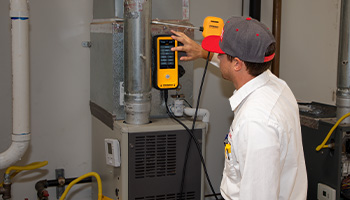
As Far As Careers Go, HVACR Goes Farther
As the job market ebbs and flows, hot new careers may come and go. But one thing remains consistent – homes and businesses always need skilled technicians to design, install and service their HVACR equipment. This makes the trades an ideal choice for someone looking for a lasting career that makes the most of their love of technology, problem-solving abilities and communication skills. Stability, security and plenty of opportunity are just a few reasons to consider a career in HVACR!
There are several ways to get started and many paths to grow a career. One way to start is to become a technician in the field for residential or commercial customers. These are the professionals who travel to a customer’s home or business to install a new system or troubleshoot and repair existing ones. They build relationships with customers while working in all kinds of settings and conditions. Skills and experience for this job are gained at a technical college or through an apprenticeship.
Another career could be designing new heating, ventilation and air conditioning systems for buildings. This involves working with a team of mechanical, electrical and civil engineers to design a system that meets customer needs as well as building codes. Typically requiring an engineering degree, these roles are ideal for professionals who want to work in a comfortable environment away from the outside elements.
There are other options as well like a career in sales and marketing or working in a “green” field by retrofitting existing systems to work more efficiently. Each one of these career paths requires unique skills and has its own degrees as well as apprenticeship opportunities. Which path you choose depends on your career goals, skills and preferences.
One way to learn more about the field, products and how best to use them is through Fieldpiece University. This free online tool was designed for technicians and HVACR tool distributors to learn more about Fieldpiece products and how customers use them best.
Fieldpiece partnered with BlueVolt to develop the curriculum that makes the most of its
learning management system tools. Each segment of Fieldpiece University is accessible on computers and mobile devices, allowing students to learn at their own pace.
Interested in a career in HVAC? Kickstart your career and visit www.fieldpiece.com/fieldpiece-university/.
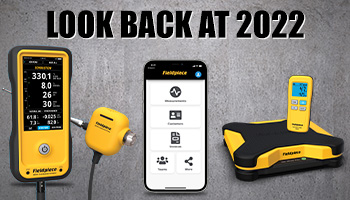
December is here! It’s time to look back at the year and take stock of everything we’ve been working on. It’s been a busy year at Fieldpiece. We rolled out new products, launched an all-new JobLink System App update and earned real recognition for our innovations. Here are just a few highlights:
We released our new heavyweight champion, the SR47 Wireless Refrigerant Scale, and expanded into the Combustion Analyzer market with our innovative CAT85 and CAT45.
The SR47 Wireless Refrigerant Scale is powerful, durable, portable and accurate. That’s why it’s the new heavyweight champ! This wireless scale helps the technician ensure the right refrigerant charge every time, and its new max weight capacity handles heavier loads – even the biggest refrigerant tanks. Highly portable and extra tough, the SR47 scale features an IP54 rating for use in wet conditions and the batteries last for more than 200 hours. That’s battery life that can last you a season!
Using our CAT45 and CAT85 Combustion Analyzers makes combustion safety and efficiency easier than ever. These tools make it simple to assess heating system emissions, live draft pressure and temperatures. They each feature new, bright 5.5-inch screens, innovative sensors that are warranted to last four years, work seamlessly with the Job Link® System App and are designed to save time and effort for techs in the field.
Speaking of the Job Link® System App, we launched our biggest update to date this year! It features game-changing functionality that allows users to streamline in-field testing and office operations. We improved our whole app interface, as well as added enhanced offline capabilities and backwards compatibility for earlier phone generations, plus a handful of other features you’ll have to check out for yourself! All techs with Job Link can check their readings live from their phone or tablet, and subscribers of Pro+ can even utilize geolocation tagging and QuickBooks integration.
We’re dedicated to continuous innovation, and expanding our portfolio to meet all the needs of the HVACR Pro. This includes another must-have for the heating season: our new CAT45 and CAT85 Combustion Analyzers. We will continue to create quality tools that not only solve problems for technicians but also gain industry recognition. Just this year, our VPX7 Vacuum Pump and DR82 Refrigerant Leak Detector won awards at the 2022 Dealer Design Awards, and we always have our eye on earning the recognition of those who matter most to us, the technician in the field.
Excellence, ease of use, and overall durability are what Fieldpiece products are known for, and we couldn’t be happier to see our products earning recognition from contractors!
To learn more about our products and how they help make life in HVAC easier, visit www.Fieldpiece.com.
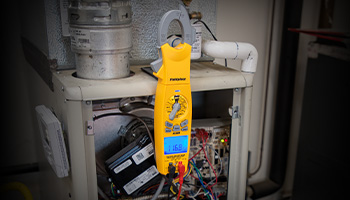
When working with a heating appliance, determining the cause of any problems is job one. One of the best tools to use for these tests is a clamp meter. It helps a tech discover and diagnose electrical problems that could be leading to other issues that the customer is seeing on their thermostat.
For a tech, it’s critical to have the right tools for testing and troubleshooting electronic controls. This ensures the safe and accurate measurement of parameters like amperage, capacitance, and voltage.
Picking up a clamp meter, like the Fieldpiece SC680 – 600 AC/DC Swivel Clamp Meter or a SC480 – 600A Clamp Meter helps a tech get to the bottom of what’s happening. Each clamp meter features a clamp jaw that’s designed to wrap securely around a wire. This helps the meter quickly and easily measure the amperage and frequency without the technician needing to touch the circuit directly.
These days, many new systems come with Variable Frequency Drives (VFDs). Their motors offer increased efficiency, but the noise they generate on the exiting voltage signal adds a level of complexity to diagnosing a system. The SC680 and SC480 each filter out the noise from the VFD and give the tech an accurate reading. Few other meters on the market do what these clamp meters do.
Not every diagnostic test runs using just the clamp meter though. Newer systems like mini-splits operate with high voltage signals and sometimes require thinner test leads to measure. The SC680 and SC480 measure up to 1000VDC and 750VAC and measure resistance into the megohm (MΩ) ranges. These higher resistance values are commonly seen on today’s more advanced systems. The SC680 and SC480 also come with needle tip test leads designed specifically for measuring Molex plugs on mini-splits.
When using a meter for the first time, use it to test known voltages – like a wall outlet or another known circuit on the job site. This helps the tech become acclimated with the device. In the outlet, the tech should find around 120 volts. But this may vary depending on the time of day, location, or during time of peak demand.
Another task for technicians is confirming proper operation of the flame sensor. The flame sensor generates a small current, measured in uADC. The SC680 and SC480 can also measure uADC, allowing the technician to diagnose and rectify on the spot.
When a tech is working on a transformer, both the primary and secondary side should be checked. There should be approximately 24 volts coming out of the secondary side. When the voltage on the primary side goes up, the secondary voltage should go up as well.
A continuity test shows a tech if a circuit is being completed in the system and helps them diagnose bigger issues like a broken wire in a motor. This test also shows if a switch is closed or open. It’s important to ensure all power is off to the circuit.
All of these tests can be quickly and safely performed using the Fieldpiece SC680 – 600 AC/DC Swivel Clamp Meter or the Fieldpiece SC480 – 600A Clamp Meter.
To learn more about these versatile clamp meters, visit Fieldpiece.com.
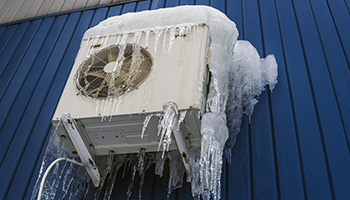
Outside, leaves are changing and snow’s about to start coming down. This means service calls in inclement weather, working in cold, dark spaces, lugging heavy equipment up and down icy steps, and a host of other potential hazards.
Here are a few important HVAC safety tips to stay safe all season long:
The first danger that a tech may encounter during the winter is cold. When working outdoors for extended periods of time, dress warmly from head-to-toe. Being tough is one thing, but it’s sure easier to get the job done with warm fingers and toes. Harsh exterior environments require warm, insulated boots, hats, and gloves.
Another significant danger a tech might encounter is electrical. And the best way to deal with that is to treat every wire like it’s a live wire. Using a clamp meter, a tech is able to quickly test any exposed wires. Before attempting to perform any service or maintenance, make sure to turn off, label and lock breakers back at the circuit box to make sure nothing is accidentally turned back on while work is being performed. Note that units may have multiple power supplies. Working safe is the best way to work around electricity.
In the world of HVAC, there’s a lot of heavy equipment. If something is too heavy for one tech to lift, find a co-worker to help. This minimizes potential injuries or damaged equipment. Also, before picking up something, learn about the best way to move it from place to place. And be aware of sharp edges and sensitive components. This minimizes personal injury and expensive equipment damage.
While working in confined spaces, a tech could come across chemicals that could potentially harm them. These range from exhaust gases and leaking refrigerant to dust, mold and even asbestos. Carbon monoxide gas is a frequent danger too as it is odorless, colorless and potentially lethal. Techs should always wear the correct PPE when working around these chemicals and work to minimize exposure and follow the recommended ventilation requirements.
To learn more about how to work better, faster, smarter and safer, visit www.Fieldpiece.com.